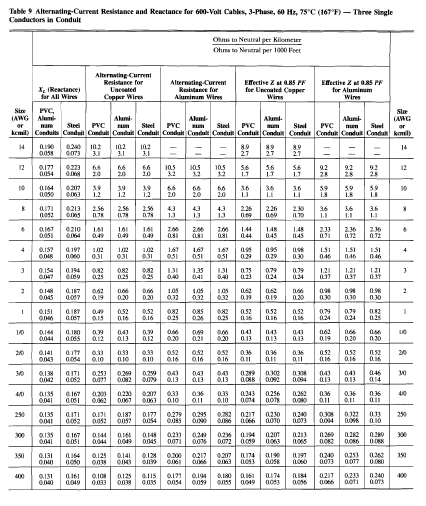What is the Advantage of IDMT in Protective Relaying?
In protective relaying there are two philosophies available to effectively achieve selectivity and coordination by time grading two philosophies are available, namely:
- Definite time lag (DTL), or
- Inverse definite minimum time (IDMT).
Traditionally, design engineers have regarded medium- and low-voltage networks to be of lower importance from a protection view, requiring only the so-called simpler type of IDMT overcurrent and earth fault relays on every circuit. In many instances, current transformer ratios were chosen mainly based on load requirements, whilst relay settings were invariably left to the commissioning engineer to determine. Most of the times, the relay settings had been chosen considering the downstream load being protected without an effort to coordinate with the upstream relays.
Read: Basic Guide in Power System Protection
However, experience has shown that there has been a total lack of appreciation of the fundamentals applicable to these devices. Numerous incidents have been reported where breakers have tripped in an uncoordinated manner leading to extensive network disruption causing longer down times or failed to trip causing excessive damage, extended restoration time and in some cases loss of life.
In Definite Time Lag or DTL, the relays are graded using a definite time interval of approximately 0.5 s. The relay R3 at the extremity of the network is set to operate in the fastest possible time, whilst its upstream relay R2 is set 0.5 s higher. Relay operating times increase sequentially at 0.5 s intervals on each section moving back towards the source as shown below,
 |
| Definite Time Lag or DTL |
The problem with this philosophy is, the closer the fault to the source the higher the fault current, the slower the clearing time – exactly the opposite to what we should be trying to achieve.
Read: IEC 61850 Logical Nodes and Data Classes in Power System Automation Data Modelling
On the other hand, inverse curves as shown in the figure below which describes operating faster at higher fault currents and slower at the lower fault currents, thereby offering us the features that we desire. This explains why the IDMT philosophy has become standard practice throughout many countries over the years
Although not appreciated by many engineers, the widespread use of inverse definite minimum time overcurrent and earth fault (IDMT OCEF) relays as the virtual sole protection on medium- and low-voltage networks requires as much detailed study and applications knowledge as does the more sophisticated protection systems used on higher voltage networks.
Applying IDMT in the System
When deciding to apply IDMT relays to a network, a number of important points have to be considered. Firstly, it must be appreciated that IDMT relays cannot be considered in isolation. They have to be set to coordinate with both upstream and downstream relays.
Their very purpose and being is to form part of an integrated whole system. Therefore, whoever specifies this type of relay should also provide the settings and coordination curves as part of the design package to show that he knew what he was doing when selecting their use. This very important task should not be left to others and once set, the settings must not be tampered (even by the operating staff ) as otherwise coordination is lost.
 |
| Minimum Grading Intervals |
To engineers planning the protection for a medium- to low-voltage network and wishing to adopt the widespread use of the IDMT OCEF relay, the above can be summarized as follows:
- Design networks with a minimum number of grading levels possible.
- Choose CT ratios based on fault current – not load current.
- Consider using 1 A secondary.
- Check CT magnetization curves for knee-point voltage and internal resistance.
- Connect ammeters, etc. onto own metering cores.
- Provide relay settings and coordination curves as part of the design package.
- Be careful when choosing relay plug tap setting on electromechanical relays. The lower the tap, the higher the burden.
- Relays should not pick-up for healthy conditions such as permissible transient overloads, starting surges and reconnection of loads, which have remained connected after a prolonged outage.
- Care should also be taken that the redistribution of load current after tripping does not cause relays on healthy circuits to pick-up and trip.
- HV IDMT relays on transformers should trip both HV and LV breakers.
- Normal inverse curves should not be selected for overload protection. Rather use the inverse characteristic for this duty.
- Take advantage of the additional features offered by the modern electronic relays, e.g. fixed very low burden, integral high-set, breaker fail and busbar blocking protections, event memory, etc. However, remember, one has to do the same calculation exercises for settings and draw coordination curves whether the relays are of the electronic or electromechanical design.
- Finally, if the switchgear suppliers also manufacture relays, do not expect them to do the protection application settings free of charge as part of the service. If this is required, specify this as a separate cost item in the specification.
- Les Hewitson
- Mark Brown PrEng, DipEE, BSc (ElecEng), Senior Staff Engineer, IDC Technologies, Perth, Australia
- Ben Ramesh Ramesh and Associates, Perth, Australia
- Steve Mackay FIE(Aust), CPEng, BSc (ElecEng), BSc (Hons), MBA, Gov. Cert. Comp., Technical Director – IDC Technologies.



.webp)











All information you included on your blog that's really commendable. All things are very useful. I hope you keep sharing your knowledgeable information with all of us.tag and test sydney
ReplyDeleteAt the point when you pick another electric supplier, you are picking the organization that gives or sells you electricity - an organization called a Retail Electric Provider. high voltage resistor manufacturer
ReplyDeleteSpillage ways in the instrument, switch cards, links, and apparatuses can cause blunders by diminishing the deliberate voltage. Pick a card with high disengagement obstruction, use guarding at every possible opportunity, and select encasings with the most elevated conceivable protection opposition. mosfet supplier in China
ReplyDelete